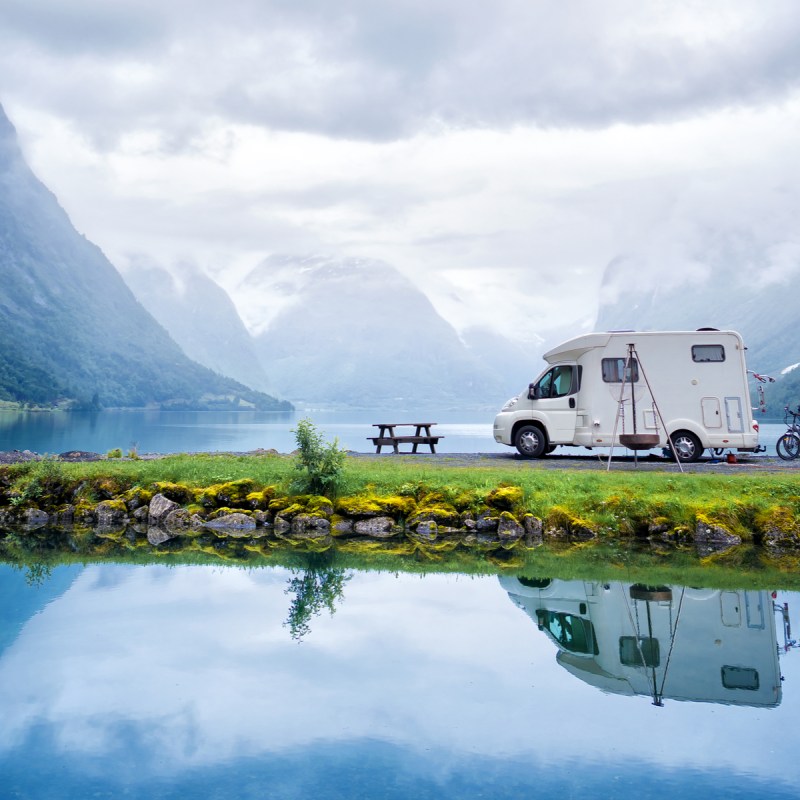
The anticipation and excitement are palpable. You’re planning an extended RV trip to a bucket list location, a family reunion, or an odyssey that you’ve dreamt of doing. Wherever you’re going on your extended RV trip, be sure to plan ahead and be prepared. I know there are people who drive by the seat of their pants and let the road take them wherever it leads. That’s a fine way to travel. Being prepared is not about having reservations, though in these crowded RV days it’s not a bad idea. Preparation will minimize unexpected problems, expenses, and delays. No one wants to be on a three-month journey and get sidelined. Here are my tips for what you need to know to make your trip memorable, manageable, and meaningful.
Videos by TravelAwaits

1. Give Yourself Time To Enjoy The Journey
When I first started traveling, I underestimated how tiring travel would be and focused on the miles. Surely, I could drive 500 miles in a day or take only 2 nights to visit major attractions. Ouch. Give yourself time to enjoy the journey. Take your time either on the road or when you get there. I don’t have a choice these days because my cat lets me know when she is tired of traveling and that we need to stop for 2 nights, not one. Take a day to enjoy wherever you’re visiting and build in an extra day to relax before heading out again. I wish I had done this on my first trip west. I felt the need to see and do it all. By the time I hit the West Coast, I was exhausted. Now, I am much more focused on enjoying the entire trip. I still drive long days when necessary, but build in rest days when I arrive.
Pro Tip: Make sure you have a couple of good RV apps to easily find spots to stay. I use Allstays Camp and RV app and Recreation.gov app.

2. Investigate Options Between Point A And Point B
Even if you don’t want to make reservations, take a look at your options before you start your trip. I usually identify three to four places to stop between Points A and B where I usually have a reservation for an extended period of time. Maybe I’ll get tired and want to stop early. Maybe I’ll have a second wind and can drive a few more hours. This summer, I made a detour and stopped at the Pipestone National Monument in southern Minnesota. I’m glad I did. I would have missed it on my anticipated route. Since I didn’t have any reservations for that night, I did some quick mileage and time calculations and realized I could make this stop, find a place to stay, and still reach my final destination as expected. I found a city park in Iowa with no reservations required. I stayed in a tiny town on a river and had a lovely night’s stay for under $20.
Pro Tip: Bring cash in small denominations because campgrounds like this one only take cash in a dropbox — and usually with no attendant.

3. Take The Bare Necessities
You won’t need everything you pack on your first attempt. Make your list and then cut out at least 30 percent of the items. I have things I bought before I started traveling that I ditched 3 months in. They took up space, I didn’t use them, and they added weight. Use those decision criteria to pare your list. Will you really need all those accessories or small appliances? Do you think you will actually wear all those clothes? If you leave something behind that you need, buy it on the road. If you know you will be glamping at a resort with fine dining, then, by all means, bring fancy clothes. Otherwise, use this as an opportunity to be your most relaxed self, kick back, and defy convention.
4. Be Prepared Is More Than A Motto
Beyond the usual tire, hitch, and engine issues, there are other safety issues. Check your fire extinguisher date, test your smoke alarm, and be sure you have a green light on your CO2 detector. Have tools you may need for small or big repairs (whatever your comfort level is). The most important tools I carry are pliers, screwdriver, bungee cords, and duct tape. I had to DIY a way to hold my broken awning this summer. I used bungee cords, office clips, and duct tape. Bring extra fuses of assorted styles. My tongue jack failed and needed a new fuse. I have a supply now. Make sure you have the essentials and whatever makes you comfortable. A long trip brings its own set of stressors so ease your burden before you start.

5. Expect The Unexpected
You know it will happen so get ready for it. You’ll have a campsite and your electric plug is not working. If you are 30 amp, carry a dog bone converter so you can use the 50 amp plug. You’ll run into weather trouble. Have at least one good weather app. I use the NOAA Clime app and The Weather Channel app. Know where your weather shelter is at your campground. I’ve made the dash several times in my travels when the tornado siren goes off. Roll with it.
6. Have Good GPS
Your long distance extended trip may take you to new locations. I have two map systems and an app that can tell me about low clearance levels. I use the Allstays app to check my route for low clearance levels if I’m getting on backroads. Allstays also will indicate road grades which helps you navigate whether you really want to be on that two-lane road in the mountains. When you are in or towing a large vehicle or trailer, you want to know that your path will be clear and safe for your driving comfort level.

7. Explore Your Surrounding
One of my best experiences was finding a local Amish farm that sold homegrown veggies and berries, as well as wonderful jams and pies. I was staying the summer in Wisconsin and poked around to find this gem. Since then I have made it a habit to explore the local area. I’ve found wonderful coffee shops, farmer’s markets, local celebrations, and oddities that are so much fun.
Pro Tip: If you like quirky, check out the stops on Atlas Obscura. I found the Garden of One Thousand Buddhas outside Missoula, Montana. I highly recommend it.

8. Bring Quarters
If you are traveling for more than a month, a laundromat is likely in your future unless you have an onboard washer. Doing laundry requires quarters. Quarters are not always available at the campground or the laundromat. There is a national coin shortage that may limit who has rolls of quarters available. Come prepared.
9. Get Your Meds
If you need to get medications refilled on the road be sure you have a plan. Transfer your prescriptions to a national pharmacy like Walgreens or use the online pharmacy option through your insurance. If you already use an online pharmacy, be sure to change your mailing address before your refill gets sent to your house.

10. Get Your Mail
Your mail delivery can be temporarily suspended for 30 days through the Post Office. Traveling for months may require you to have someone pick up your mail at your house or you can forward your mail to a friend or family member. Consider using a mail service for RVers through commercial services like Escapees. Most of these mail services offer mail scanning with images of the contents sent via email. You won’t have to worry about getting physical mail while traveling. You can have bulk packages of your mail sent wherever you want, whenever you want.
Enjoy your experience. Make memories and jot them down in a camp journal. Make friends on the road. You won’t regret slowing down and savoring your journey.
TravelAwaits has a number of informative articles on RV travel like these:
